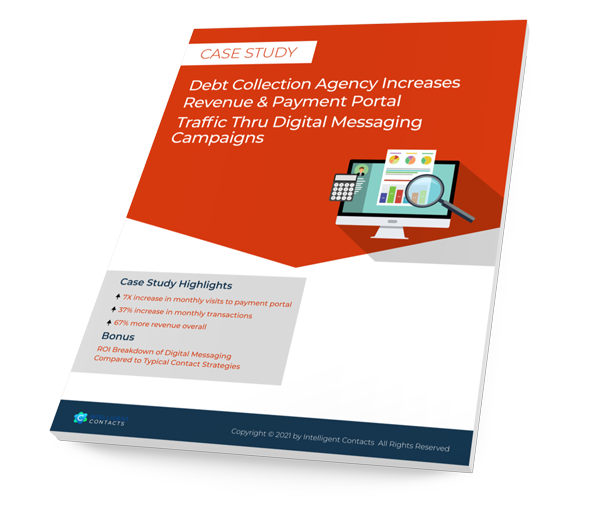CALL CENTER KPIs | 5 MINUTE READ
The 6 Game-Changing KPIs Elite Contact Center Leaders Swear By

In today’s fast-paced digital world, the success of a contact center hinges on the ability to effectively monitor and optimize key performance indicators (KPIs). For leaders, understanding and tracking these KPIs is crucial to enhance operational efficiency, improve customer satisfaction, and drive overall business performance.
This article delves into the six essential KPIs that every contact center leader should keep a close eye on: Average Speed of Answer (ASA), Average Handle Time (AHT), Average Hold Time, Average Wrap Time, Average Abandon Rate, and Average Quality Score.
By focusing on these metrics, leaders can gain invaluable insights into their team’s performance, identify areas for improvement, and implement strategies that ensure their contact center thrives in an increasingly competitive landscape.
1. Average Speed of Answer (ASA)
ASA measures the average time it takes for an agent or associate to answer an inbound call. It’s crucial because long wait times can lead to customer dissatisfaction and increased call abandonment rates.
How it’s calculated & Industry Benchmarks
ASA = Total Waiting Time for Answered Calls / Total Number of Answered Calls
20-30 Seconds
30-45 Seconds
25-35 Seconds
Root Causes:
Understaffing: When a contact center does not have enough agents to handle the incoming call volume, customers are left waiting in the queue longer, leading to higher ASA times. This issue often arises from inadequate workforce management or unexpected surges in call volume.
Inefficient Call Routing: Inefficient call routing can significantly increase ASA times. If calls are not directed to the right agent promptly due to poor Interactive Voice Response (IVR) systems or outdated Automatic Call Distribution (ACD) technology, customers spend more time waiting for their calls to be answered by the appropriate representative.
High Call Volume and Complexity: High call volumes, especially during peak times or due to specific events or issues, can lead to increased ASA. Additionally, complex customer inquiries that take longer to resolve can also cause longer queues and waiting times.
Suggestions for improvement:
Operational:
- Increase staffing levels during peak times to reduce wait times.
- Implement skill-based routing to ensure calls are directed to the most appropriate agent.
How our Intelligent Contact Center Can Improve Average Speed to Answer
Our Intelligent Contact Center solution uses Intelligent IVR technology to quickly and accurately get calls to the right campaign, team, or individual agent.
Featured Topics
ARM Industry Topics
Healthcare Industry Topics
Contact Center Solutions & Topics
Auto & Predictive Dialing
Stealth Voicemail
Payment Topics & Solutions
Compliance & Data Security
2. Average Handle Time (AHT)
AHT is the average duration of a single transaction, including hold time, talk time, and follow-up tasks. It is important as it reflects the efficiency and productivity of the contact center.
How it’s calculated & Industry Benchmarks
AHT = (Total Talk Time + Total Hold Time + Total After-Call Work Time) / Total Number of Calls Handled
5-7 minutes
7-9 minutes
6-8 minutes
Root Causes:
Insufficient Agent Training: When agents lack comprehensive training, they may struggle to resolve customer inquiries efficiently. This can lead to longer call durations as agents take additional time to find solutions or consult with leaders, increasing the overall handle time.
Complex Customer Issues: Some customer inquiries are inherently more complex and require more time to address. This includes technical problems, billing disputes, or situations requiring extensive troubleshooting. As a result, the average handle time can rise due to the nature of these more involved interactions.
Inefficient Processes and Systems: Outdated or poorly integrated systems can slow down the resolution process. For example, if agents have to navigate multiple systems to retrieve information or perform actions, this can significantly increase the time taken to handle each call. Streamlining processes and upgrading technology can help reduce these inefficiencies.
Suggestions for improvement:
Operational:
- Train agents to handle calls more efficiently by using scripts and checklists.
- Encourage first call resolution to reduce the need for follow-up calls.
How our Intelligent Contact Center Can Improve Average Handle Time
Our Intelligent Contact Center’s Agent Interface puts agents in the driver’s seat through a series of “screen pops” that show all relevant consumer account information as soon as the call is connected.
Our interface also includes call scripting and dynamic call flow assistance that can also include live agent coaching powered by AI.
Featured Topics
ARM Industry Topics
Healthcare Industry Topics
Contact Center Solutions & Topics
Auto & Predictive Dialing
Stealth Voicemail
Payment Topics & Solutions
Compliance & Data Security
3. Average Hold Time
AHT is the average duration of a single transaction, including hold time, talk time, and follow-up tasks. It is important as it reflects the efficiency and productivity of the contact center.
How it’s calculated & Industry Benchmarks
Total Hold Time / Total Number of Calls Placed on Hold
1-2 minutes
2-3 minutes
1.5-2.5 minutes
Root Causes:
Lack of Information or Resources: Agents may place customers on hold frequently if they need to gather information, consult with colleagues, or use multiple systems to find the necessary details. This can be due to inadequate training or inefficient knowledge management systems that slow down the process of retrieving information.
Insufficient Staffing Levels: When there are not enough agents to handle the incoming call volume, existing agents may have to place calls on hold while they finish up with previous callers. This scenario often arises during peak times or unexpected surges in call volume, leading to increased hold times.
Complexity of Issues: Some customer issues are more complex and require more time to resolve, which can necessitate placing the caller on hold. This is particularly common in technical support or specialized service departments where agents need to perform in-depth troubleshooting or access specific systems and tools to resolve the customer’s problem.
By addressing these issues, contact centers can reduce average hold times and improve overall customer experience.
Suggestions for Improvement:
Operational:
- Improve agent training to handle inquiries more quickly and efficiently.
- Use real-time monitoring to identify and address issues causing excessive hold times.
Technological:
Implement call-back technology to allow customers to opt for a call-back instead of waiting on hold.
How our Intelligent Contact Center Can Improve Average Hold Times
Besides the efficiency of our Intelligent Call Routing, our Intelligent Contact Center gives consumers the option to enter a call back number instead of waiting on hold. This feature will automatically call the consumer back the moment an agent becomes available.
Featured Topics
ARM Industry Topics
Healthcare Industry Topics
Contact Center Solutions & Topics
Auto & Predictive Dialing
Stealth Voicemail
Payment Topics & Solutions
Compliance & Data Security
4. Average Wrap Time
Average Wrap Time refers to the time an agent spends completing work related to the call after the call has ended. Reducing wrap time is important for increasing agent availability and overall productivity.
How it’s calculated & Industry Benchmarks
Total Wrap Time / Total Number of Calls
30-60 seconds
45-75 seconds
40-70 seconds
Root Causes:
Detailed Post-Call Documentation: Agents may need to spend significant time documenting the details of each call, entering notes into the CRM system, and updating customer records. This can be particularly time-consuming if the call involved complex issues or multiple steps that need thorough documentation to ensure accurate record-keeping and future reference.
Inefficient Workflow Processes: Outdated or cumbersome processes for completing post-call tasks can lead to longer wrap times. If agents have to navigate multiple systems or follow a lengthy series of steps to complete their post-call work, this can significantly extend the time required to wrap up a call.
Inadequate Training or Support Tools: If your staff are not properly trained on efficient post-call procedures or lack access to effective tools and templates, they may spend more time than necessary completing their wrap-up tasks. Ensuring agents are well-trained and have the right tools can help streamline post-call activities and reduce wrap times.
Suggestions for Improvement:
Operational:
- Standardize post-call processes to streamline wrap-up tasks.
- Provide agents with templates and quick-entry forms for common post-call documentation.
How our Intelligent Contact Center Can Shorten Average Wrap Times
Through our modern agent interface, we’ve made wrapping up a call incredibly efficient with our Rapid Wrap screen. This feature automates much of the call disposition process and helps the agent move on to the next call.
Additionally, our system provides supervisors with color alarms whenever an agent exceeds your target KPI for wrapping up a call.
Featured Topics
ARM Industry Topics
Healthcare Industry Topics
Contact Center Solutions & Topics
Auto & Predictive Dialing
Stealth Voicemail
Payment Topics & Solutions
Compliance & Data Security
5. Average Abandon Rate
Average Abandon Rate is the percentage of calls that are terminated by the customer before speaking to an agent. Lowering the abandon rate is critical for ensuring customer satisfaction and service level compliance.
How it’s calculated & Industry Benchmarks
(Number of Abandoned Calls / Total Number of Incoming Calls) x 100
3-5%
4-6%
3-5%
Root Causes:
Long Wait Times: One of the primary reasons customers abandon calls is because they are left waiting in the queue for too long. If the call center is understaffed or experiencing high call volumes, customers may become frustrated with extended wait times and choose to hang up before their call is answered.
Inadequate Call Routing: Inefficient call routing systems that fail to direct callers to the appropriate agents quickly can lead to increased abandon rates. If customers are bounced around different departments or placed on hold repeatedly, they are more likely to abandon the call out of frustration.
Lack of Callback Options: Providing customers with the option to receive a callback when an agent becomes available can significantly reduce abandon rates. When this option is not available, customers who are unable to wait on hold are more likely to abandon the call, particularly during peak times or when all agents are busy.
By addressing these issues, contact centers can improve customer satisfaction and reduce the average abandon rate.
Suggestions for Improvement:
Operational:
- Ensure sufficient staffing during peak hours.
- Improve call forecasting and scheduling to match call volumes.
How our Intelligent Contact Center Can Improve Average Abandon Rates
With Intelligent Contact Center’s automated call back feature, consumers always have the option to request a call back instead of remaining on hold. When the consumer hangs up, they keep their place in line and receive a call as soon as the next agent becomes available.
Featured Topics
ARM Industry Topics
Healthcare Industry Topics
Contact Center Solutions & Topics
Auto & Predictive Dialing
Stealth Voicemail
Payment Topics & Solutions
Compliance & Data Security
6. Average Quality Score
Average Quality Score is a metric that measures the overall quality of interactions between agents and customers based on predefined criteria. It’s vital for ensuring consistent and high-quality customer service.
How it’s calculated & Industry Benchmarks
Total Quality Scores of Evaluated Calls / Total Number of Evaluated Calls
85-90%
80-85%
85-90%
Root Causes:
Inadequate Agent Training: When agents are not thoroughly trained, they may lack the necessary skills and knowledge to handle customer interactions effectively. This can lead to poor communication, insufficient problem resolution, and a lack of professionalism, all of which negatively impact quality scores. Continuous training and development are crucial to maintaining high standards of service.
Lack of Quality Monitoring and Feedback: Without regular monitoring of calls and providing constructive feedback, agents may continue to make the same mistakes. Effective quality assurance processes involve reviewing interactions, scoring them against set criteria, and giving agents actionable feedback to improve their performance.
Ineffective Tools and Resources: If agents do not have access to efficient tools and resources, they may struggle to provide accurate and timely information to customers. This can result in prolonged call durations, repeated information requests, and overall poor customer service experiences, leading to lower quality scores. Ensuring that agents have the right technology and resources can significantly improve the quality of service they deliver.
Addressing these issues can help improve average quality scores, leading to better customer satisfaction and overall performance of the contact center.
Suggestions for Improvement:
Operational:
- Provide regular feedback and coaching to agents based on quality evaluations.
- Develop and enforce standardized call handling procedures.
Technological:
Use quality monitoring software with speech analytics to provide real-time feedback and identify training opportunities.
How our Intelligent Contact Center Can Improve Average Quality Scores
Our Intelligent Contact Center includes Speech Analytics, which streamlines and automates the QA process with the help of AI. All calls are scored for compliance, script adherence, and training. This includes automated agent scorecards and sentiment analysis.
Agents have access to listen to poorly scored calls and can immediately see which areas need to be improved.
Featured Topics
ARM Industry Topics
Healthcare Industry Topics
Contact Center Solutions & Topics
Auto & Predictive Dialing
Stealth Voicemail
Payment Topics & Solutions
Compliance & Data Security
Want to know more?
Whether you’re looking to upgrade one part of your communication or payment process or the whole enchilada, we can help!
CASE STUDY








